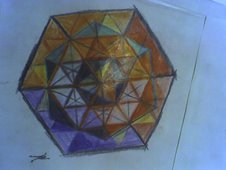I've been thinking a lot about the possibility of a topography of time. How could one map the various gradients caused by massive bodies and acceleration? (The time dilation effect.) Going from macroscopic to microscopic, what would time look like at the smallest of scales, i.e., Planck time and Planck space? Is time's uni-directional quality preserved at these scales?
How does one account for apparent synchronicity (action at a distance) in experiments with entangled photon pairs? These seem to imply a communication of state that violates the universal speed limit of C.
Was time created as the result of an instability that existed prior to the Big Bang?
If time had a beginning, does it also have an end?
Since our awareness of time depends on memory, no discussion of time's topography would be complete without taking into account this fundamental element of mind. As a neighbor of mine once remarked, "The years fly, and a minute drags." An excellent book that deals with this is Proust's Remembrance of Time Past.
In addition to Proust's literary exploration of time and memory, it might also be interesting to have an overview of the current neurological models of human memory and theories regarding human awareness of time.
skip to main |
skip to sidebar


Hello.

Stupid Stuff, Cheap!

Blog Archive
-
▼
2005
(127)
-
▼
March
(58)
- Benadryl
- Umm...
- Pinkerton Reunion, Saturday
- Egg Salad
- The Symbol That Represents Itself
- The Three Stooges at the Portland Zoo.
- Hunter
- Hunter
- More of the Three Stooges
- Image:MS A la recherche du temps perdu.jpg - Wikip...
- The Dimensions of Time
- Sunday Dinner With the Ricoys
- Telegraph | News | Scientists to make 'Stuart Litt...
- Evil Woodpecker
- River Ruins
- I don't think the folks building this house in Lak...
- Funny Stream House.
- More River Ruins.
- Another View.
- Train on Trestle.
- Detail of Trestle Footing.
- Under the Train Trestle.
- River Wreck
- River Ruins
- Relic
- Another small bridge.
- Gate of mystery.
- I found where the sidewalk ends.
- St. Patrick's Day in Oak Grove, OR
- I've got to
- Nick doing his homework at the last minute.
- Thieving Weasel
- Oregon is the New California
- Tic Tac Toe.
- Hunter at Sellwood Park.
- Hunter on the monkey bars.
- A view of Portland from the Willamette.
- The view from the back porch is gorgeous.
- Den.
- The downstairs kitchen.
- A cozy livingroom inside the ruined house.
- Inside the ruined house. Nice view of the Willame...
- Back view ruins.
- The ruins of a toilet.
- Side view of ruins.
- I've always been intrigued by ruins.
- Another Clackamas bridge.
- I should have used a flash, but this tree had the ...
- The Clackamas, near where it joins the Willamette.
- An abandoned bridge over the Clackamas.
- Close-up of aforementioned stream.
- Stream
- I found a gate to nowhere.
- This is the view behind the abandoned house.
- Addictive
- The Kingdom of Maybe
- Talk to Evil Woodpecker, the Talking Bot
- Ant Heads Controlling Giant Robots
-
▼
March
(58)

